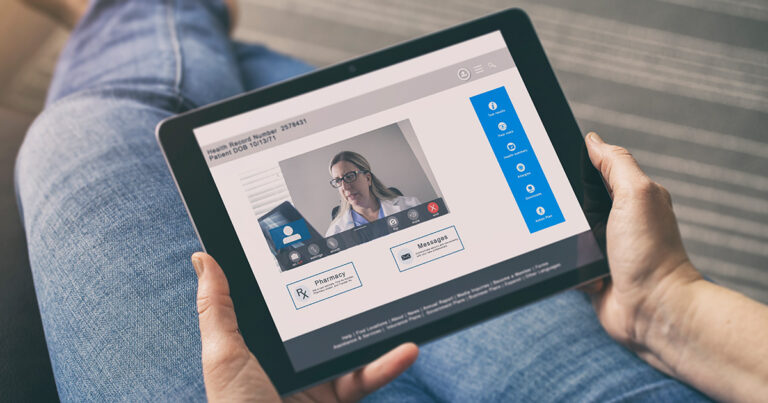How to Be Attentive (Not Annoying) with Patient Communication & Follow-Up
How you communicate with your patients – especially out of office – is critical to making sure your patients are happy and satisfied with your practice.
In fact, effective patient communication can help produce long-lasting relationships, increase patient retention, and even boost word-of-mouth marketing that can bring new clients into your practice.
But it’s not always easy to know how to strike a balance between being attentive and thoughtful…and annoying and overbearing.
Patients want to know that their medical provider cares for their needs, and is competent and capable with their medical data. At the same time, they don’t want to feel that their provider is asking too much of their time outside of office appointments – or worse, is making mistakes with appointment scheduling or information.
The answer to this challenge is consistent, well-timed communication that relays your personal interest in your patient’s well-being…as well as your competency as a medical care provider.
Pre-Appointment Patient Communication
New or incoming patients may be especially sensitive to how you communicate with them, even before their first appointment.
The first step to showing that you are committed to their healthcare goals is to send a pre-appointment questionnaire.
A pre-appointment questionnaire includes questions about the patient’s medical history, existing medical conditions, usage of prescription medication or supplements, and contact information. But it also includes open-ended questions that give them an opportunity to share specifics about their personal healthcare goals.
Ultimately, this kind of questionnaire has multiple benefits: It provides you with valuable insight that can help you deliver more quality care, and it communicates that you are already focused on their goals.
You may also want to send a medical release form before a patient’s first appointment, which gives your practice consent to share private medical information with a third party, if necessary.
In any case, you’ll want to send all applicable forms in a single email that clearly and simply communicates what you would like patients to do (in warm and friendly language of course!) If you use electronic forms, this step is even easier. Using electronic forms is far more efficient than relying on PDFs that patients will have to print out. Plus, they can be easily linked to email communication.
Follow-Up Patient Communication
Following up on a patient visit is equally – if not more – important than how you communicate with patients before an appointment. Patients have invested time and potentially money into visiting your practice and sharing their personal information. Now, they want to know that you are following up on their visit competently and thoroughly.
You have several options for effective follow-up communication:
Reminder Email
It may be the case that your patients have paperwork or follow-up appointments to schedule after their appointment at your practice. Send a friendly reminder email that clearly communicates follow-up steps that a patient should be taking. Remember that this kind of reminder email will need to be coordinated at the time of the patient’s appointment, in order to ensure that it contains accurate information.
Follow-Up Phone Call
You may also want to make a follow-up phone call after a patient’s first appointment. Outside of communicating administrative details (concerning paperwork, third party testing, or scheduling), you can use this opportunity to simply ask how a patient is doing. Occasional phone calls like these with both new and existing patients communicate that you care about how your clients are feeling and functioning on a day-to-day basis.
Patient Survey
A patient survey is a powerful way to gather important, actionable insights for improving your practice and level of patient satisfaction. Not only that, but a survey shows your patients that you value their opinion.
Email your patients a short survey to ask for their feedback on quality of care and overall experience. Your subject line can be warm and friendly, such as “We want to hear from you!” or “Hi! Have a minute to share about your experience?”
Then, ask a combination of open-ended questions and “rating” questions to collect valuable data you can use to make changes to your practice.
Text Message
Texting your patients may seem a little out-of-the-ordinary, but it can be an effective mode of communication…especially for those that prefer texting to speaking on the phone. Texting is especially helpful for appointment confirmations, as patients simply text a “YES” or “NO” to confirm their appointment. Or, you can include links to your website, survey, or an electronic form on a text message.
In any case, you can afford to be a little more aggressive in your communication during the post-appointment phase. At this point, patients expect to hear from you more frequently, especially in terms of ensuring necessary administrative follow-up.
What to Avoid
Now that you know how to communicate your care and concern to patients, you’ll need to know how to avoid communication that’s annoying, overbearing, or worse – incompetent.
If your patient has multiple forms to fill out, send those forms in a single email or other form of communication. Otherwise, patients might get confused, thinking that they have already filled out necessary forms. This also keeps the process streamlined and easy-to-understand.
Likewise, avoid making repetitive or unnecessary phone calls about appointment scheduling or follow-up. Your patients will be irritated by multiple voicemails or unnecessary questions.
Training your staff is an essential part of helping to avoid these errors in communication.
Have You Thought of…?
You might not realize it, but there are aspects of your practice that can significantly affect how your patients feel about your style of communication.
These include your:
Website
If you’re driving patients to your website through email, text message, or other kinds of digital communication, you’ll want to make sure that your site is functional and clean. Patients should be able to easily navigate through your site to fill out electronic forms or find important information.
Mobile Friendly
Make sure that your site, emails, and other forms of digital communication are mobile-friendly. Test them out on a smartphone to see how graphics and text appear, and to test links and buttons for functionality. Remember that many – if not most – of your patients will be using their phones to access your information!
Staff
How friendly, clear, and attentive are your staff? Since your staff members may be the primary people at your practice with whom your patients communicate, you’ll want to take necessary steps to ensure that staff are “customer friendly.” That may involve special training, or hiring employees who are highly personable and gifted at working with people.
Electronic Forms
If you’re currently using paper forms, making the switch to electronic forms can significantly improve how you communicate with patients. Electronic forms reduce administrative hiccups or errors, increase safety and HIPAA compliance, and offer a user-friendly medium for patients to quickly and efficiently provide their information to you.
Free Download: Creating an effective follow-up email checklist.
A Win-Win for Everybody
Ultimately, healthy, effective communication will not only help your patients feel heard, understood, and cared for – it will help your practice become more successful.
Good communication practices will ultimately boost patient retention, eliminate potentially costly errors on your part, and increase the number of referrals you receive. It’s a win-win for all: For patients who want to develop an ongoing relationship with a trustworthy medical provider, and for practices who want to reach more potential clients and maintain their existing patient base.







